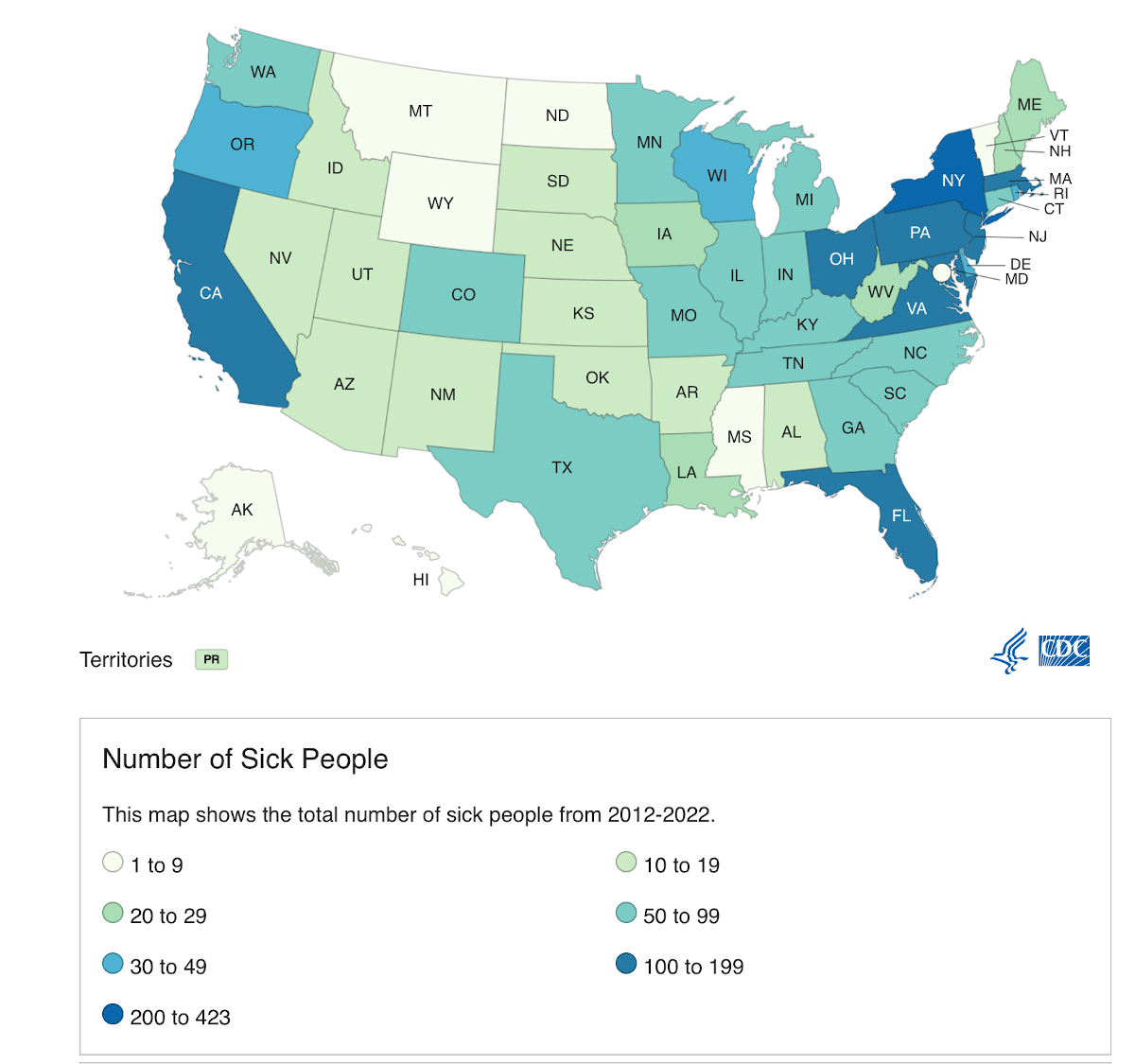The CDC is reporting that a number of infections from a persistent strain of Salmonella are linked to chicken. It is currently legal for producers, distributors and retailers to sell Salmonella contaminated poultry in the United States.
A citizen petition to make it illegal to sell poultry contaminated with any one of 31 strains of Salmonella — including the persistent strain referenced by this CDC report — has been filed with the U.S. Department of Agriculture, but the department has not acted on it.
The persistent strain, Salmonella Infantis REPJFX01, “is a leading strain of Salmonella found in chicken produced in the United States,” according to the information posted on a new web page set up by the Centers for Disease Control and Prevention.
The agency says it designates strains of bacteria as persistent when they are known to have caused illnesses over months or years.
Illness caused by the persistent strain of Salmonella Infantis REPJFX01 was first reported to PulseNet in 2012. As of Dec. 31, 2022, information from 2,900 patients with REPJFX01 infections had been reported to PulseNet. Sick people lived in all 50 states.
The median age of patients was 54 years, with 62 percent being female. Illnesses caused by this strain occur year-round but are most common in July and August, according to the CDC. In the past, REPJFX01 has spread to people through contaminated chicken in the United States and through exposure during international travel.
Among a subset of 251 patients with records in the Foodborne Disease Active Surveillance Network (FoodNet) during 2018 to 2020, ten percent of patients traveled internationally in the seven days before their illnesses began. Most traveled to the Dominican Republic, with 45 percent having traveled there. Other countries of destination and the percentage of patients having traveled there included Peru with 25 percent, and Ecuador with 10 percent.
Among the same subset of patients, 29 percent were hospitalized and 7 percent were admitted to intensive care units. Among 85 patients who received antibiotics recommended as a first-line or alternative treatment for salmonella infection, 78 percent had an isolate that was resistant to that antibiotic.
“Bacteria from most sick people’s samples showed resistance to multiple antimicrobials, including several that are recommended for first-line or alternative treatment: ampicillin, ceftriaxone, ciprofloxacin, and trimethoprim-sulfamethoxazole,” the CDC reports.
“. . . lab-confirmed cases comprise only a small portion of the true number of illnesses that occur because most people do not seek medical care and even fewer submit a clinical (e.g., stool) specimen,” according to the CDC.
The federal agency and local, state, and regulatory partners have investigated several clusters of Salmonella Infantis illness as possible outbreaks caused by the REPJFX01 strain.
Information from more than 6,000 REPJFX01 isolates from non-human sources has been reported to PulseNet, with the earliest in 2014. Most isolates are from chicken samples collected by the U.S. Department of Agriculture’s Food Safety and Inspection Service.
Although whole genome sequencing (WGS) data from U.S. Food and Drug Administration samples have not always been submitted to PulseNet, more than 1,000 food and environmental isolates collected through FDA sampling programs are highly related to REPJFX01 isolates by WGS, including many samples from retail chicken products.
(To sign up for a free subscription to Food Safety News, click here)

